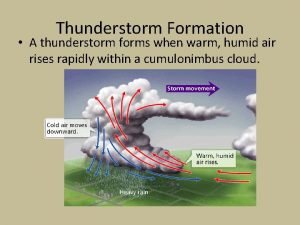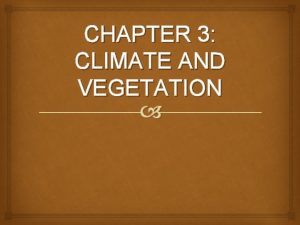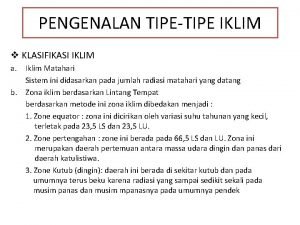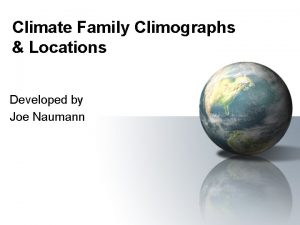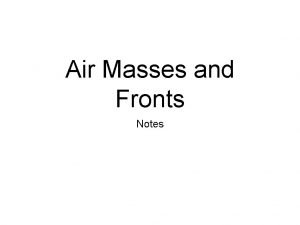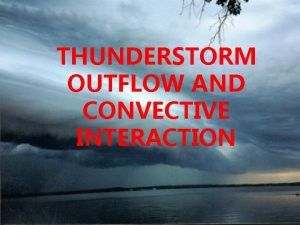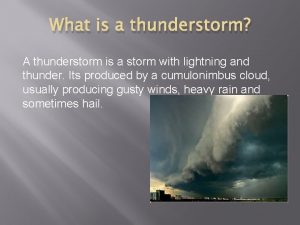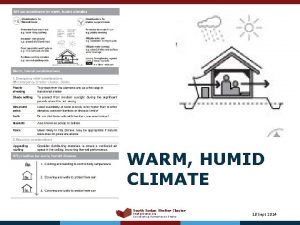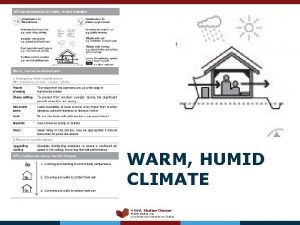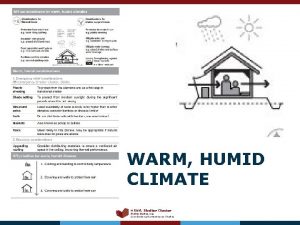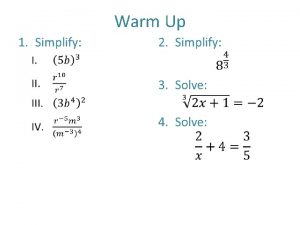Thunderstorm Formation A thunderstorm forms when warm humid


















- Slides: 18

Thunderstorm Formation • A thunderstorm forms when warm, humid air rises rapidly within a cumulonimbus cloud.

• Thunderstorms have warm temperatures, moisture, and rising air, which may be supplied by a low-pressure system. • Thunderstorms have a three-stage life cycle: the cumulus stage, the mature stage, and the dissipation stage.

• The cumulus stage is dominated by cloud formation and updrafts. • After the cumulus stage, downdrafts, which are air currents moving vertically toward the ground, begin to form.

• In the mature stage, heavy winds, rain, and lightning dominate the area.

• In the dissipation stage, updrafts stop, winds die down, lighting ceases, and precipitation weakens.

Time

Tornadoes

• A tornado is a violent, whirling column of air in contact with the ground. • Tornadoes form when thunderstorm updrafts begin to rotate.

- Storms Tornado Formation • Tornadoes can form when warm, humid air rises rapidly in thick cumulonimbus clouds— the same type of clouds that bring thunderstorms.

- Storms Tornado Alley • Tornadoes in the U. S. are most likely to occur in a region known as Tornado Alley.

Tornadoes • Occur most in May & June • Occur most between 3 -8 pm What conditions are needed? ?





- Storms Structure of a Hurricane • In a hurricane, air moves rapidly around a lowpressure area called the eye.

Begins as a low-pressure area over warm water, or a tropical disturbance Warm, humid air rises and begins to spiral As air rises, more warm, moist air is drawn into the system, and the hurricane gains energy As winds spiral inward, bands of high winds and heavy rains form.

 Thunderstorms form when warm humid air rises in a(n)
Thunderstorms form when warm humid air rises in a(n) Humid seal
Humid seal I am very cold
I am very cold Standard time
Standard time Chapter 3 section 1 seasons and weather
Chapter 3 section 1 seasons and weather Humid subtropical climate
Humid subtropical climate Humid subtropical climate characteristics
Humid subtropical climate characteristics Loose-fitting clothing
Loose-fitting clothing Iklim arid dan humid
Iklim arid dan humid Cfa humid subtropical
Cfa humid subtropical Marine west coast
Marine west coast Iklim af
Iklim af Air mass chart
Air mass chart A warm front forms when _____.
A warm front forms when _____. Formation initiale vs formation continue
Formation initiale vs formation continue Why are related forms more agreeable than unrelated forms
Why are related forms more agreeable than unrelated forms That weak form
That weak form To have contracted form
To have contracted form Why are related forms more agreeable than unrelated forms
Why are related forms more agreeable than unrelated forms
